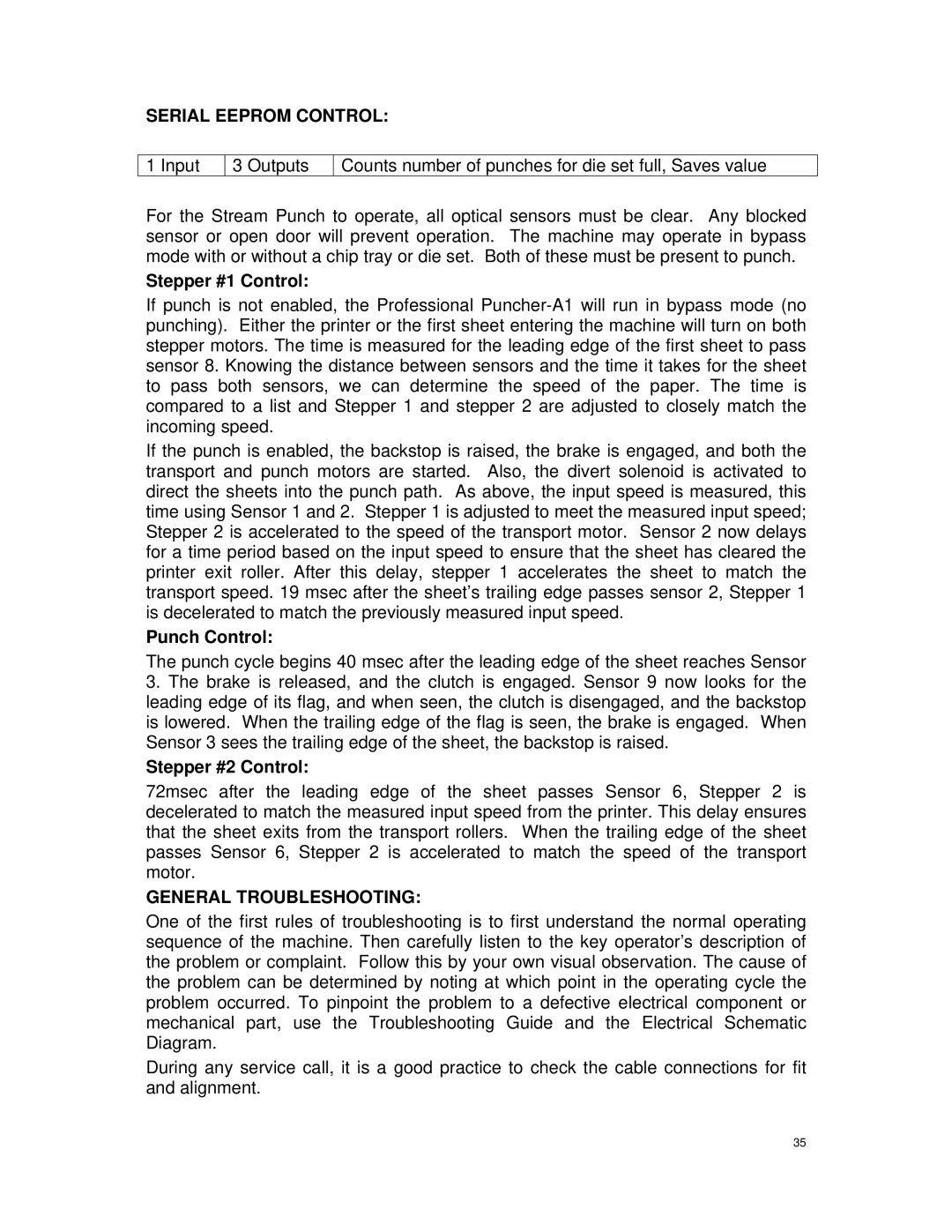SERIAL EEPROM CONTROL:
1 Input
3 Outputs
Counts number of punches for die set full, Saves value
For the Stream Punch to operate, all optical sensors must be clear. Any blocked sensor or open door will prevent operation. The machine may operate in bypass mode with or without a chip tray or die set. Both of these must be present to punch.
Stepper #1 Control:
If punch is not enabled, the Professional
If the punch is enabled, the backstop is raised, the brake is engaged, and both the transport and punch motors are started. Also, the divert solenoid is activated to direct the sheets into the punch path. As above, the input speed is measured, this time using Sensor 1 and 2. Stepper 1 is adjusted to meet the measured input speed; Stepper 2 is accelerated to the speed of the transport motor. Sensor 2 now delays for a time period based on the input speed to ensure that the sheet has cleared the printer exit roller. After this delay, stepper 1 accelerates the sheet to match the transport speed. 19 msec after the sheet’s trailing edge passes sensor 2, Stepper 1 is decelerated to match the previously measured input speed.
Punch Control:
The punch cycle begins 40 msec after the leading edge of the sheet reaches Sensor
3.The brake is released, and the clutch is engaged. Sensor 9 now looks for the leading edge of its flag, and when seen, the clutch is disengaged, and the backstop is lowered. When the trailing edge of the flag is seen, the brake is engaged. When Sensor 3 sees the trailing edge of the sheet, the backstop is raised.
Stepper #2 Control:
72msec after the leading edge of the sheet passes Sensor 6, Stepper 2 is decelerated to match the measured input speed from the printer. This delay ensures that the sheet exits from the transport rollers. When the trailing edge of the sheet passes Sensor 6, Stepper 2 is accelerated to match the speed of the transport motor.
GENERAL TROUBLESHOOTING:
One of the first rules of troubleshooting is to first understand the normal operating sequence of the machine. Then carefully listen to the key operator’s description of the problem or complaint. Follow this by your own visual observation. The cause of the problem can be determined by noting at which point in the operating cycle the problem occurred. To pinpoint the problem to a defective electrical component or mechanical part, use the Troubleshooting Guide and the Electrical Schematic Diagram.
During any service call, it is a good practice to check the cable connections for fit and alignment.
35
